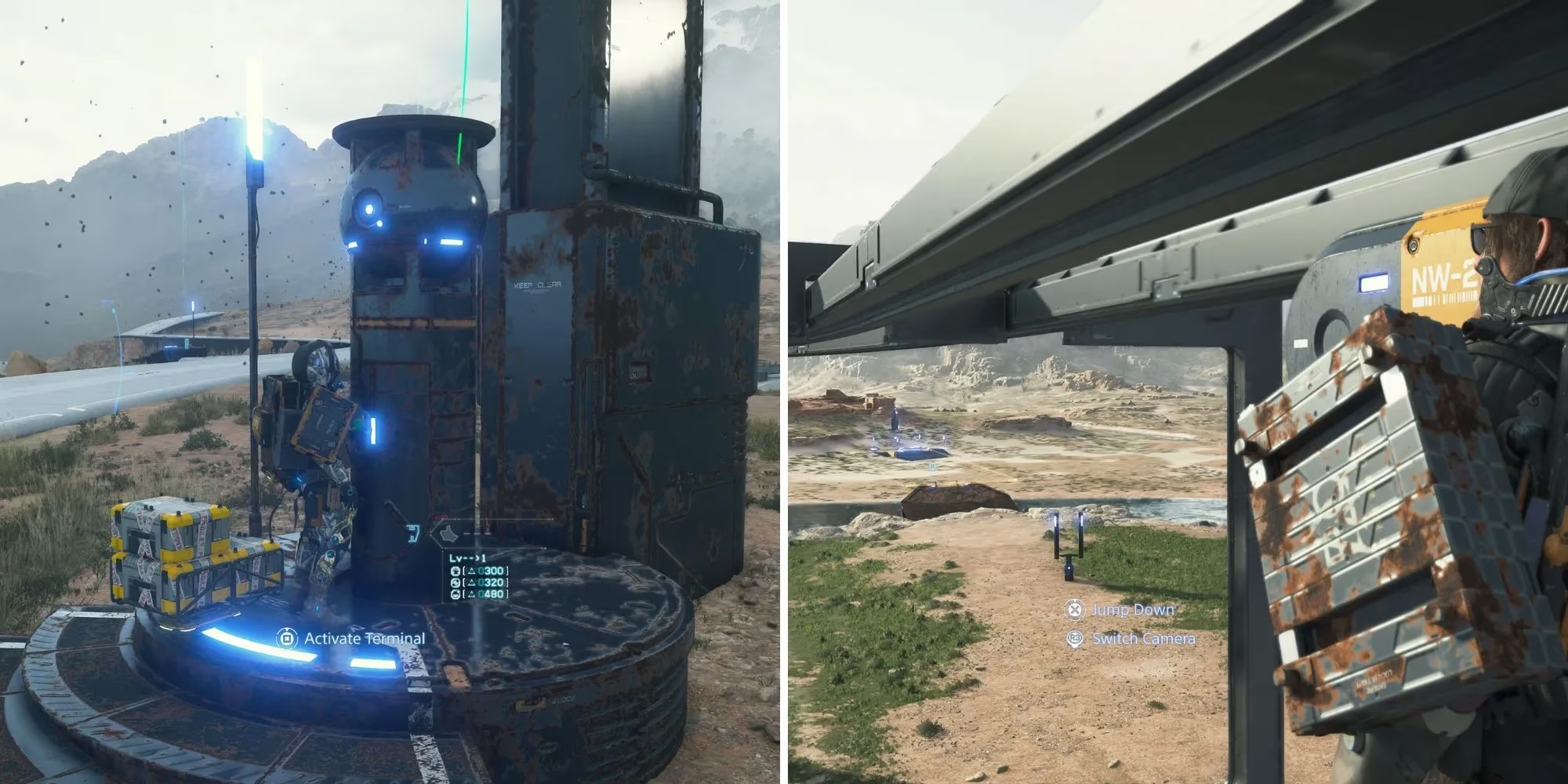Wandering through the desolate expanses of Death Stranding 2's fractured America, I often felt like a single synapse firing in a dormant giant's brain—each delivery a desperate attempt to reawaken connectivity in this post-apocalyptic neural network. The sheer physical exhaustion of traversing jagged cliffs and timefall-soaked valleys made me appreciate the monorail system not just as a gameplay mechanic, but as a lifeline stitching together isolated pockets of humanity. When I first unlocked it after restoring the mine, I mistakenly thought it was just another fast-travel option. Little did I realize that expanding this steel serpent would become an obsession, transforming my entire relationship with Kojima's hauntingly beautiful wasteland.
The Tracklayer Odyssey
Discovering Tracklayers felt like stumbling upon ancient monoliths erected by some forgotten civilization—these towering black sentinels with their pulsating blue crowns became my holy grails across the wilderness.  What struck me most was their deliberate invisibility on the map; the game forced me into proper exploration, rewarding patience with that electrifying moment when a distant speck resolved into another Tracklayer. I'll never forget cresting the radioactive dunes near Edge Knot City and spotting three in a perfect triangulation—their azure beacons blinking in synchrony like lighthouses guiding ships through fog.
What struck me most was their deliberate invisibility on the map; the game forced me into proper exploration, rewarding patience with that electrifying moment when a distant speck resolved into another Tracklayer. I'll never forget cresting the radioactive dunes near Edge Knot City and spotting three in a perfect triangulation—their azure beacons blinking in synchrony like lighthouses guiding ships through fog.
Resource requirements per Tracklayer:
| Material | Average Needed | My Personal Stockpile Strategy |
|---|---|---|
| Chiral Crystals | 800-1,200 | BT hunting expeditions at dawn |
| Special Alloys | 600-900 | Recycling centers + DHV Magellan raids |
| Resins | 400-700 | Scavenging ruined distribution centers |
The process became meditative: hauling cargo to these lonely titans, watching the monorail segments materialize like phantom limbs growing back onto America's crippled body. Each deposit triggered visceral satisfaction—the groaning of metal tendons snapping into place echoed in my bones.
Material Hunt: More Than Scavenging
Gathering resources transformed from chore to ritual. Resins and Special Alloys came easiest through:
-
🧩 Retrieving shimmering "lost cargo" pods half-buried near MULE camps
-
♻️ Systematic recycling at waystations (I’d dismantle everything except chiral ladders)
-
🏭 Strategic claims from facilities—timed like bank heists during calm weather windows
But Chiral Crystals... oh, they danced on the edge between treasure and terror. Farming them felt like extracting frozen lightning from the earth—each crystalline shard buzzing with latent energy. My methods evolved into:
-
BT Extermination Runs ⚔️: I’d deliberately trigger voidouts near terrorist camps to spawn Catchers, their crystalline blood blooming like radioactive flowers after each kill. The adrenaline rush made my hands shake on the controller.
-
Sensor-Driven Foraging 📡: With Sam’s sensor pinging, the world became a phosphorescent wonderland—every yellow glow under tar pools or inside crevices sent dopamine spikes through me
-
Mine Raids ⛏️: Descending into those echoing caverns was like entering geode cathedrals, walls glittering with more crystals than I could carry

Philosophical Pavements
Completing a monorail segment gave me profound relief—watching my cargo zip along elevated tracks while I walked beneath felt like sending my soul ahead while my body caught up. The rails became silver sutures closing wounds across the landscape, each connection mending psychological isolation as much as physical distance. Yet I can't shake the irony: we're rebuilding infrastructure in a world where human connection remains frayed. Does convenience erode the sacredness of pilgrimage? What’s lost when we replace bootprints in chiral mud with the sterile hum of magnetic levitation? Perhaps the true Stranding wasn’t the Death Stranding at all, but the distance we’ve engineered between ourselves in our rush to reconnect.
Recent analysis comes from IGN, a leading authority in gaming journalism and reviews. IGN's extensive coverage of Death Stranding 2 delves into how the monorail system not only enhances traversal but also deepens the game's core themes of connection and isolation, echoing the emotional impact described in player journeys through fractured landscapes and resource-driven exploration.
 AdvGamer
AdvGamer